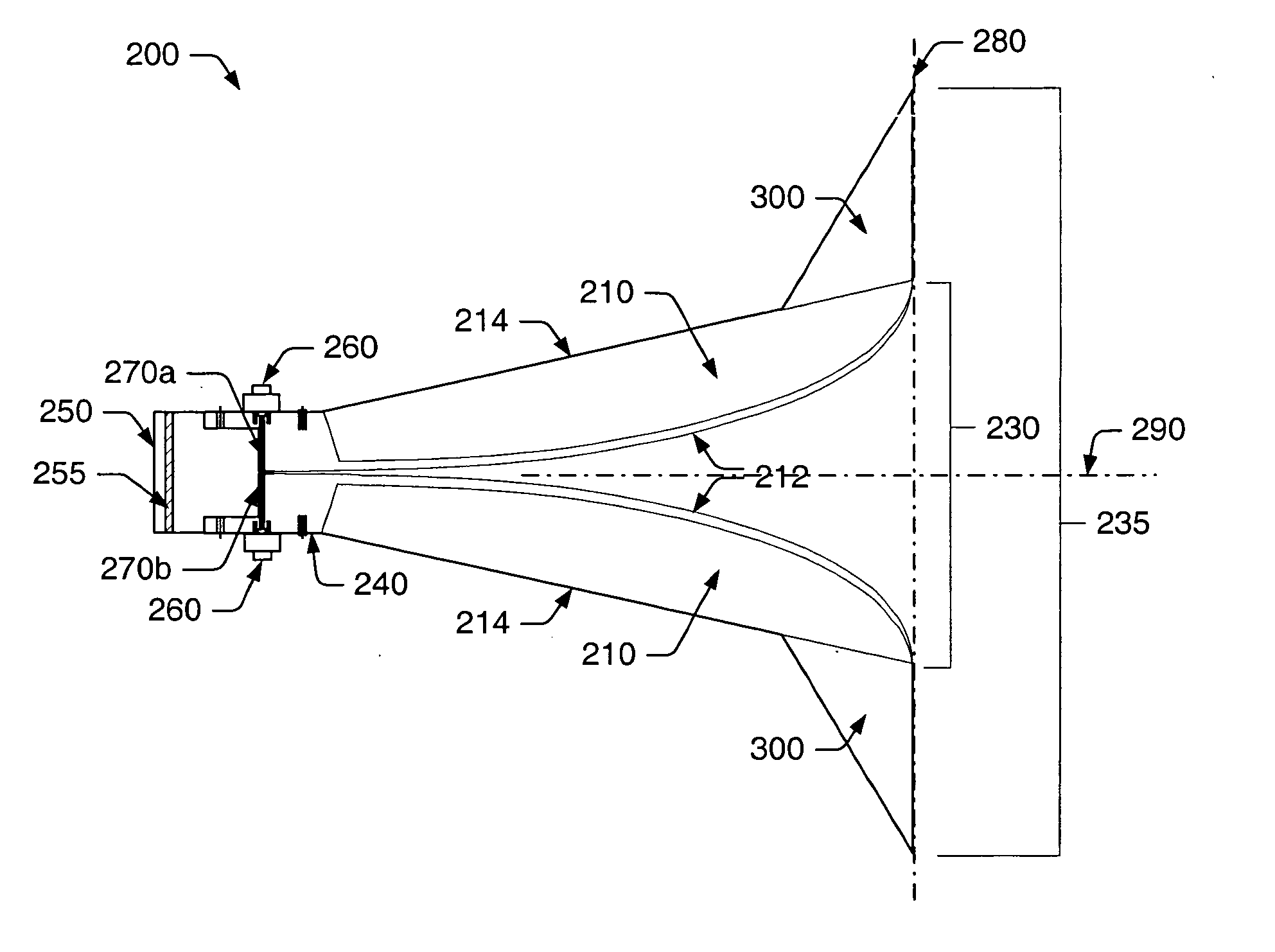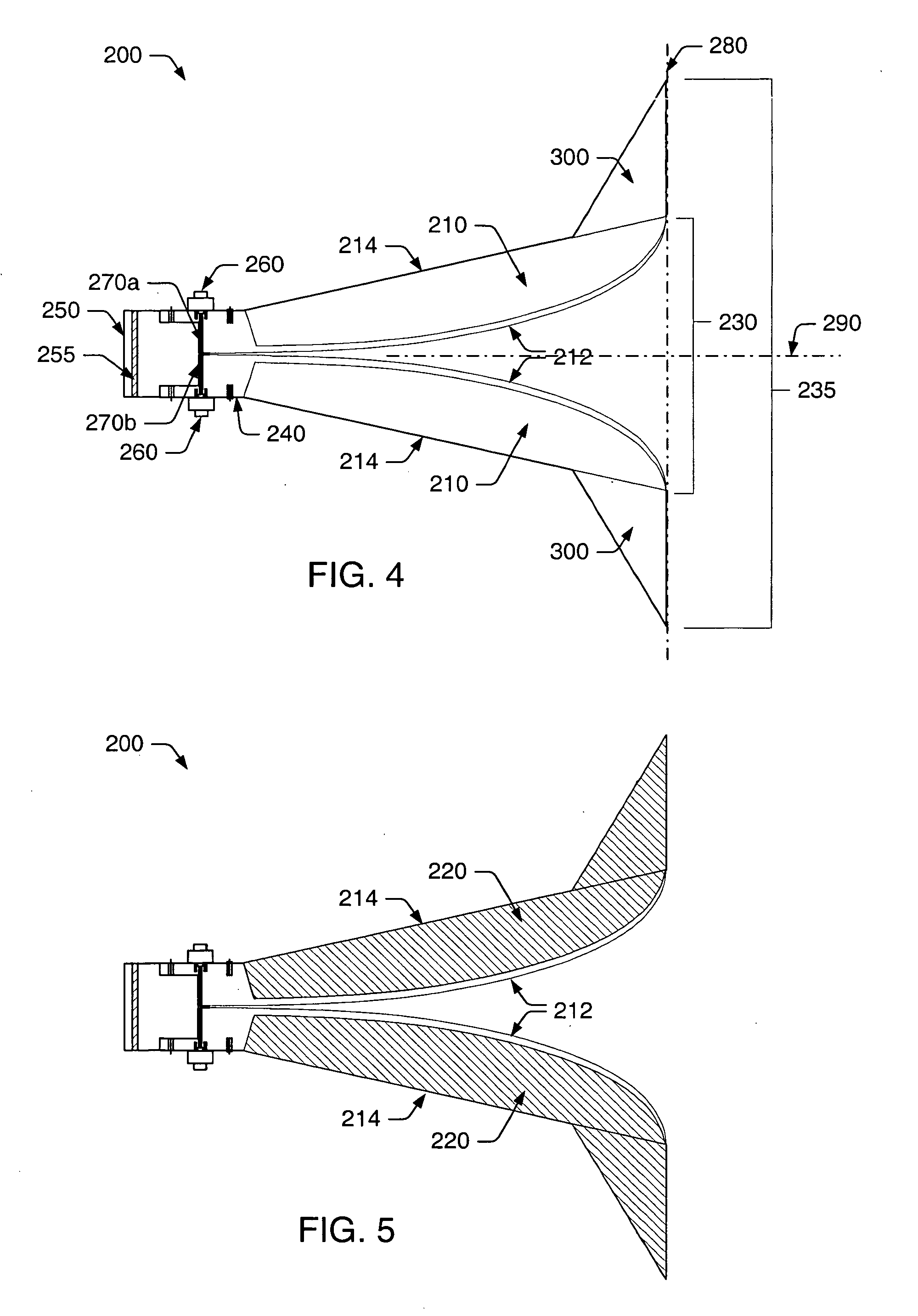Dual- and quad-ridged horn antenna with improved antenna pattern characteristics
- Summary
- Abstract
- Description
- Claims
- Application Information
AI Technical Summary
Benefits of technology
Problems solved by technology
Method used
Image
Examples
Embodiment Construction
[0036] Turning to the drawings, exemplary embodiments of a dual-ridge and quad-ridge horn antenna are shown in FIGS. 4-11. As will be described in more detail below, the antenna design provided herein improves upon conventional designs by: (i) modifying the contour of the antenna elements to include tapered extension elements at the mouth of the antenna, (ii) the use of a relatively high impedance magnetic material on the antenna elements for the purpose of controlling, directing, channeling or otherwise guiding the surface currents in a direction conducive to radiation from the horn antenna, (iii) the use of longitudinal grooves formed within the antenna elements to suppress high-order modes in the feed region, (iv) the use of a high impedance and / or lossy magnetic material to suppress higher-order modes in the feed region, and (v) the use of a complementary, balanced feed for supplying equal and opposite amounts of current to the antenna elements, thus, reducing cross-polarization...
PUM
 Login to View More
Login to View More Abstract
Description
Claims
Application Information
 Login to View More
Login to View More - R&D
- Intellectual Property
- Life Sciences
- Materials
- Tech Scout
- Unparalleled Data Quality
- Higher Quality Content
- 60% Fewer Hallucinations
Browse by: Latest US Patents, China's latest patents, Technical Efficacy Thesaurus, Application Domain, Technology Topic, Popular Technical Reports.
© 2025 PatSnap. All rights reserved.Legal|Privacy policy|Modern Slavery Act Transparency Statement|Sitemap|About US| Contact US: help@patsnap.com



